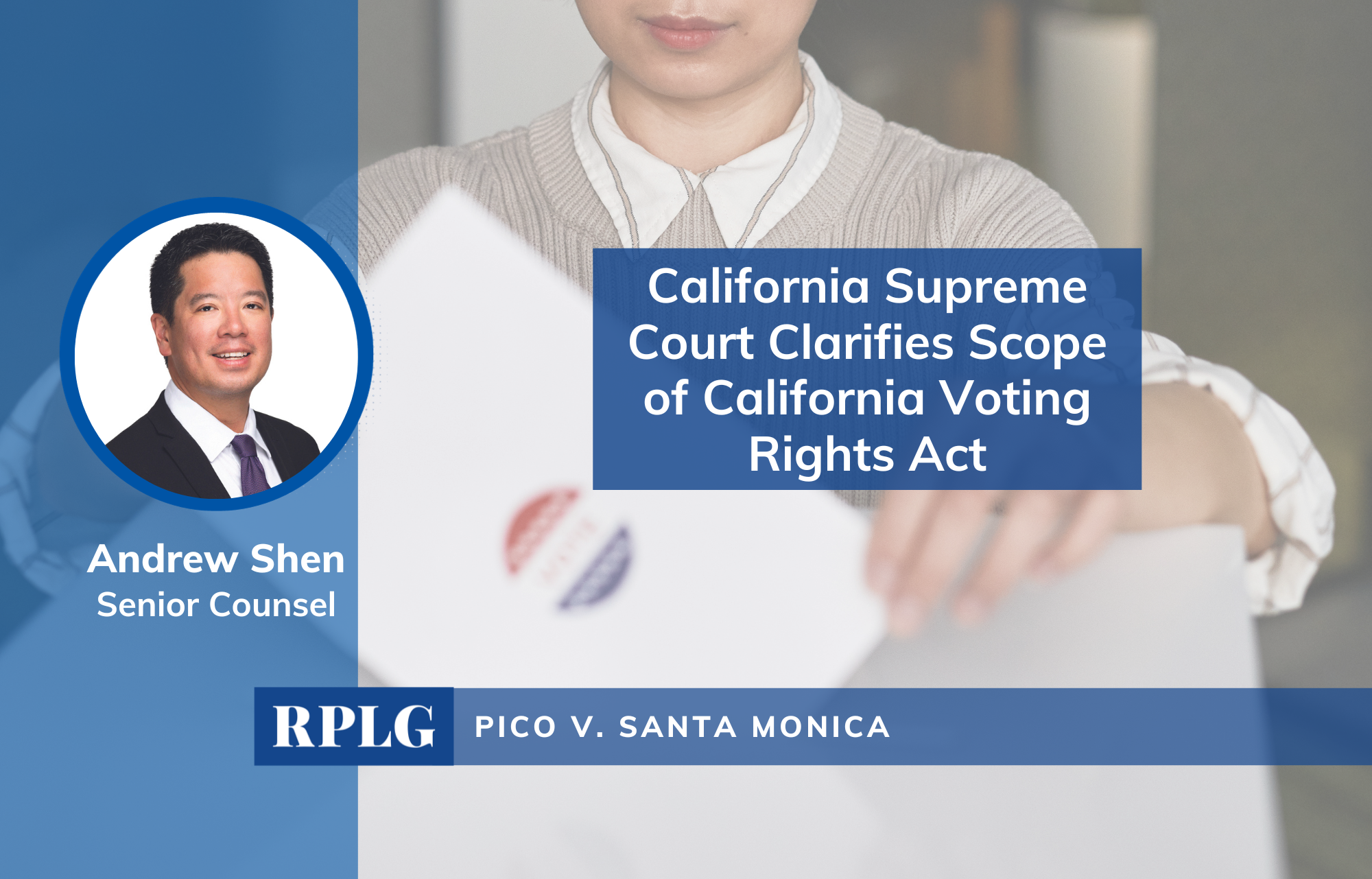The California Voting Rights Act
In 2001, the Legislature passed the California Voting Rights Act (“CVRA”) to make it easier—compared to federal law—for minority groups to prove that local electoral systems undermine their voting power. The statute has proved influential, with many public agencies modifying their election systems in response to litigation threats.
The CVRA prohibits at-large elections, elections where the entire electorate votes on the members of the governing body, that dilute minority voting power. Courts can order a variety of remedies for a CVRA violation. One common remedy is switching to by-district elections, which divide the jurisdiction into geographic districts.
Appellate courts have adopted different interpretations of what constitutes minority vote dilution under the CVRA. Under one view, a plaintiff need only show that voting in the jurisdiction is racially polarized. Voting is racially polarized when a minority group prefers a candidate, but the rest of the electorate supports another candidate. In another view, a plaintiff must additionally demonstrate that a minority group could constitute a majority in a hypothetical, geographically cohesive voting district, enabling it to elect its preferred candidate.
The Supreme Court’s Answer
The California Supreme Court rejected both approaches in favor of a middle-ground approach in Pico Neighborhood Ass’n v. City of Santa Monica (Aug. 24, 2023, No. S263972) ___ Cal.5th ___. After analyzing the text, its legislative history, and the federal Voting Rights Act, the Court found that vote dilution under the CVRA requires more than racially polarized voting. A plaintiff must also prove that “under some lawful alternative electoral system, the protected class would have the potential, on its own or with the help of crossover voters, to elect its preferred candidate.” That is, support from other voters—crossover voters—can make a minority group sufficiently influential to receive protection under the CVRA. The Court also endorsed, in appropriate circumstances, possible remedies in a CVRA lawsuit other than by-district elections, including alternative voting systems such as ranked-choice voting.
Unanswered Questions
The Court’s decision addressed one of the threshold questions regarding the CVRA. But the Court’s opinion adds another complex and fact-intensive inquiry to the evaluation of CVRA claims—i.e., what constitutes the legally significant amount of potential crossover voting. The Court’s opinion also raised questions about what electoral “influence” the CVRA protects. Is it solely a minority group’s ability to elect a candidate it truly supports? Does it also include a group’s ability to elect an “acceptable,” if not a preferred candidate, or a group’s ability to “block” a disfavored one? Courts will likely address these questions in the future.
For more information on this case or other matters relating to elections, please contact your RPLG attorney or Andrew Shen.

